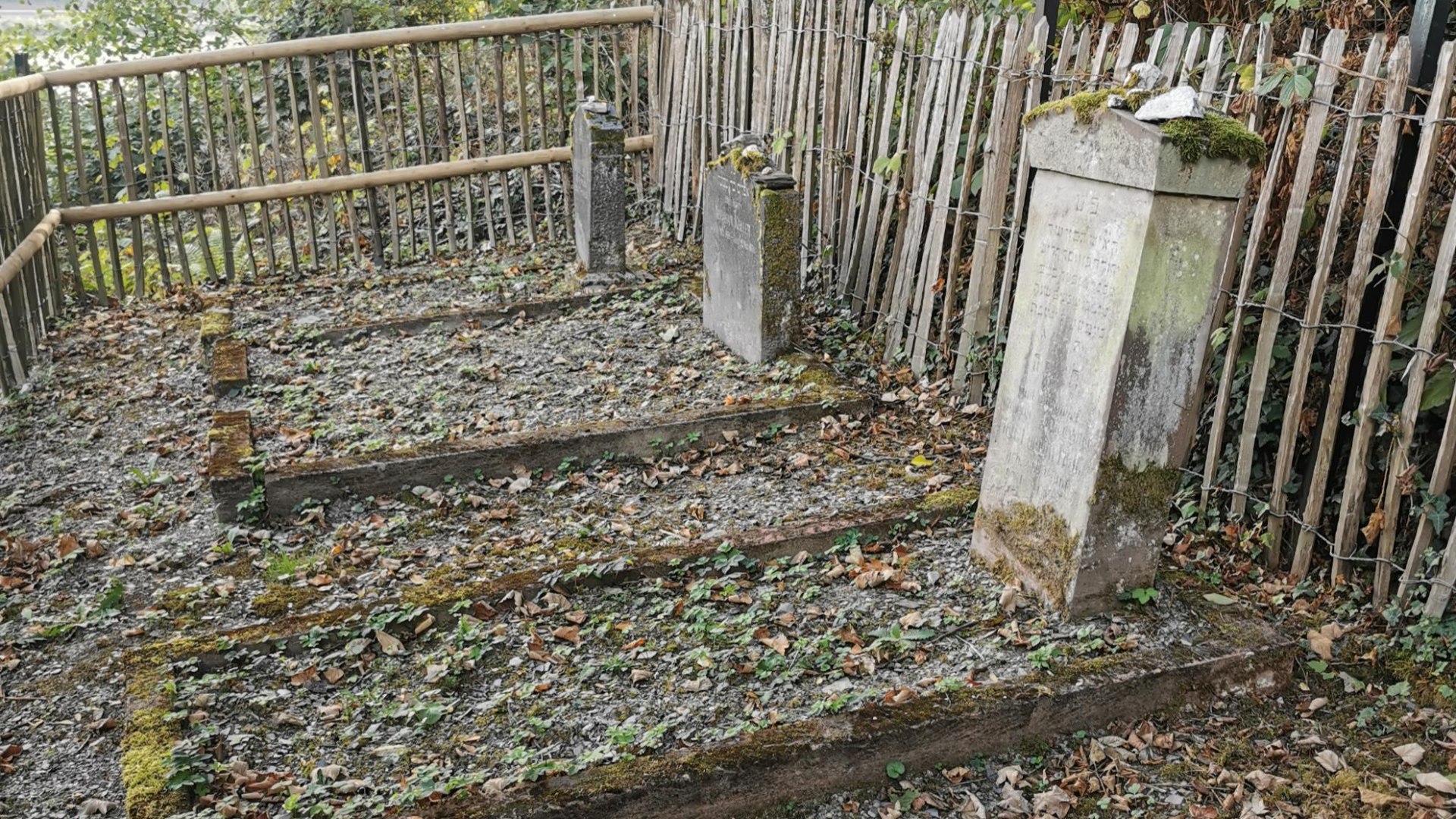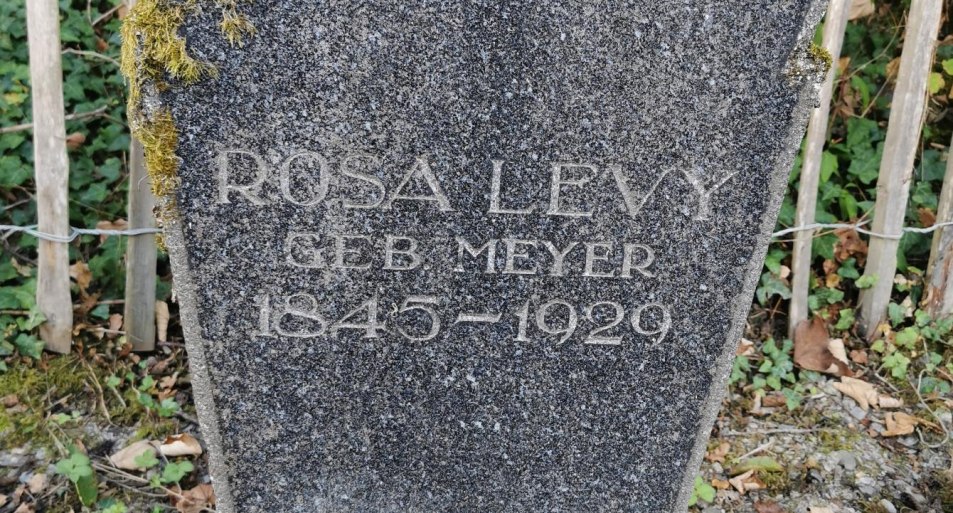Jüdischer Friedhof
An der B9, 55422 Bacharach
At the end of the 1920s, the Jewish cemetery in Bacharach was established in connection with the town's general cemetery.
The preserved gravestones bear witness to three burials. The cemetery area is located about one kilometre outside the city, above the Mainzer Straße. The Jewish part is above the Christian graves. There is a separate entrance via a staircase. Before the burial in Bacharach, Jewish parishioners were first buried in Kaub on the right bank of the Rhine and then in Oberheimbach.



